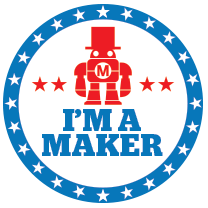Wow, it’s official, I have now launched my first professional résumé blog and am writing my first post! I have been thinking about creating this site for quite a while but the time constraints of working and being a full-time grad student, along with the uncertainty of exactly what I’d write, had held me back. But I finally decided to take the leap and just start writing!
That said, I chose to make this first post about two tech resources, one I’ve engaged in frequently (#edchat) and one that’s completely new to me (Storify). I started participating in #edchat around this time last year and since then, have gained a lot of knowledge and online resources from the weekly chats and from following the hashtag throughout the week. I have been inspired by the sheer number of educators across the globe who have participated in #edchat and really appreciate the relevant, participant-selected topics that are discussed.
Yesterday, I was able to participate in the first #edchat of the day (12pm EST) on the topic of “What is it that educators are supposed to be preparing kids for?” It was interesting to see the range of ideas discussed, including breaking away from standards-based education and testing, using ePortfolios for student and teacher reflective practice, and changing how we train teachers to make their education more relevant to schooling today. It’s a challenging question and I don’t think there’s any single answer to what educators are supposed to be preparing kids for. Instead, one thing I am wondering is, how often are educators and policy makers getting together to discuss this question (on Twitter and offline) and are there ways these conversations can occur more regularly? If enough people start asking and engaging in a discussion around these types of questions on a consistent basis it seems like we could make better progress in shaping our education system to be more relevant and supportive of students and to help prepare teachers to provide high-quality, meaningful education to all students.
Meanwhile, during #edchat yesterday I received a tweet that I was mentioned in someone’s Storify publication. I have been seeing more and more stories compiled through Storify recently so I decided that it was time to explore the site myself. If, like me, you are new to Storify, you can learn more about it on their FAQ page. I found that it was extremely easy to start an account, at least if you use your existing Twitter account to log in to the site. I had planned to compile a story or a Storify (is it used as a noun?) about the #edchat discussion because I had seen some interesting tweets during the chat and exchanged some thought-provoking messages with others who were participating. Unfortunately, when I went to create my story later that night, I realized that you can only view tweets relating to popular hashtags like #edchat from the past few hours. This meant that all of the tweets from the #edchat I had participated in were no longer visible … oops. So, as is often the case with technology, I had to change my plan.
As I tried to search and find tweets from the earlier #edchat discussion, I came across some more recent #edchat messages that sparked an idea for a new story. I realized that at almost any point, given the popularity #edchat, there are people tweeting ideas and perspectives that can lead to valuable reflection on education and technology. So using that idea, I compiled some tweets about Twitter and educators’ use of tech tools. Next, I added some text before each tweet to frame my ideas and elucidate how I saw one tweet connecting to another. Before I knew it, I had a short story composed of five tweets and a few short bits of text (see my next post). After exploring Storify, I think it will be a good addition to my list of free online tools that can be used to compile pieces of text, video, or pictures to describe an idea or convey a message. It looks like a a great resource for students, teachers, trainers, or anyone using social media and looking to quickly and easily pull together different elements to tell a story. What do you think?












Pingback: Another Year Gone By | Margaret A. Powers
Pingback: EduTweet #edchat Discussion- Professional Development so Last Century « adaptivelearnin
Pingback: New Model for Professional Development - adaptivelearnin
Pingback: Why Blogging is Important for Educators – A Personal Perspective | Margaret A. Powers